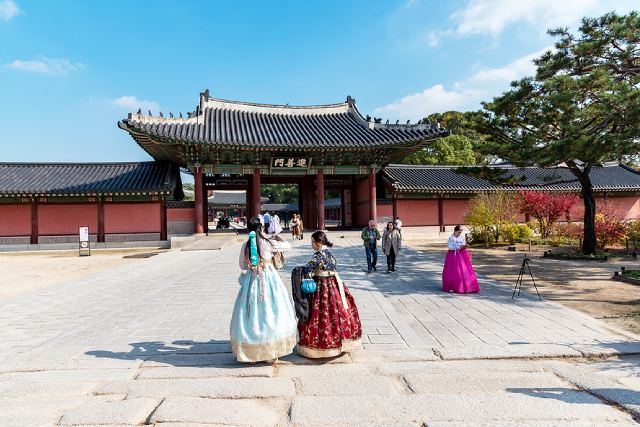UNESCO has declared 14 sites in Korea to be World Heritage sites. As of 2019, Korea has more of these sites than other well-known countries such as Romania, Israel, and even Egypt!
Should you be keeping your eyes on Korea for your post-pandemic travel, you might want to take these World Heritage sites and add them to your itinerary. Yes, 14 places may seem a lot for a 5-day trip, which is why we have narrowed the list down to the ones we think are the best so you can make the most out of your time.
1. Changdeokgung Palace Complex
No matter where you are in the world, palaces will always be majestic. In the heart of Seoul stands the Changdeokgung Palace Complex, a 58-hectare sight-to-behold. Because it is located at the foot of the mountain Baegaksan, you can anticipate flora thriving all over the place.
Built in the Joseon period, Changdeokgung Palace Complex is one of the five palaces that were constructed during that time, and is one that comes with much history – from the way it is built all the way to how its design tells stories about those who lived there in the past.
The palace was once a residence for the royal before the Japanese invasion of 1592 set the entire structure on fire. But because of hard work and restoration, the palace stood back up and now has the stone steps, the Donhawum gate, walkways, and grand halls that you definitely wouldn’t want to skip out on.
It’s also worth noting that the place has a Secret Garden graced with pavilions and lotus pond bridges. When exploring the grounds of this World Heritage site, try looking for it especially if it’s during the spring time when cherry blossoms are in full bloom.
2. Yangdong and Hahoe Village
Avid watchers of Korean drama have most probably seen this place flashed on their TV screens. The villages of Yangdong and Hahoe are a must-visit if you want to feel as if you were transported back to 14th and 15th century Korea – with its tile-roofed houses and beams of either wood or hay, you will definitely feel as if you were the lead in your favourite K-drama series.
Despite being in the 21st century, those who live in the village still have some primordial-style of living along with modernized ones; you might even catch them throwing parties the old fashioned way.
3. Jongmyo Shrine
Built in the 14th century, the Jongmyo Shrine was intended to honour the dead royal family. It was architecturally-influenced by Confucianism, complete with elegant features on the tiled roofs and red beams. Nowadays, the shrine hosts 5 different rites and rituals every year in its solemn and peaceful atmosphere. If you want a nice getaway from the city hustle and bustle, add Jongmyo Shrine to your list of places to visit.
4. Hwaseong Fortress
If military architecture is more up your alley, the Hwaseong Fortress might be the site that will blow your mind. Standing in Gyeonggi-do, the place was erected in the late 18th century as a defence post, which is why it features walls of stone and bricks, observation towers, as well as bunkers that were designed for battle.
The place was built when there were plans to shift the capital of Seoul to Suwon, and if you’re wondering – the plan didn’t push through. But because the place stands in the middle of Suwon, you could easily see the city walls if you were to drive around the monument. If you wish to visit the place, make sure that you go see the Paldalmun gate which is right in the middle of a roundabout, and is easily the fortress’ signature feature.
5. Jeju Volcanic Island
Even though Jeju island is separate from the mainland, tourists would still gladly take two separate flights to go there – one to fly to Korea, and one to fly to the island itself. One of the main reason why people fly to Jeju Island is because of its landscape that is very different from that of mainland Korea. Jeju has rich soils and minerals that are primarily responsible for its fantastic views and local biodiversity. With clear blue waters and lush greeneries to boot, you simply cannot get enough of Jeju Island.
Should you find yourself in the island, its lava columns and tubes are our key spot recommendations. When the island was formed, the lava columns made volcanic peaks and the signature Geomunoreum lava tube systems. And thanks to the array of minerals in the soil, the lava columns also appear in different colours, giving the caves an ethereal feel.
Conclusion
It’s not every day that UNESCO names as much as 14 places in a single country as World Heritage sites. But if you do happen to visit Korea, we recommend going to at least the 5 places that we have mentioned because exploring them helps you have a better grip on Korean culture and why these places deserve the recognition.
Visiting these sites; however, isn’t the only way that you can better understand the culture in Korea. At Sejong Korean Language School, our teaching methodologies are designed to connect you to both the Korean language and immerse you in the culture!


